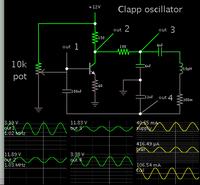waulu
Newbie level 2
Hello,
I am designing and building a simple radio transmitter just to practise my electronic skills and learn a little bit more. I started by designing a clapp oscillator, which produce a sine wave with a fundamental at 1 MHz (the goal), and many harmonics at 2 MHz etc. My first question is if I should add a band filter to try to reduce the harmonics?
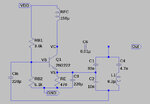
Clapp oscillator
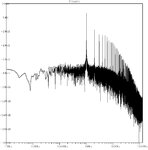
FFT of the signal generated by the oscillator
Next I added a mixer to modulate the signal and the carrier. I present a graph with the waves of the signal, oscillator and the modulated signal. My questions are: How can I isolate the oscillator signal so it doesn't get modulated? Should I add a matching network between the oscillator and the mixer? Is the modulated signal acceptable or is it too weak?
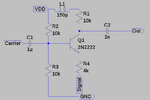
AM modulator

Bench where I test everything

Oscillator (red), signal (blue) and modulated signal (green)
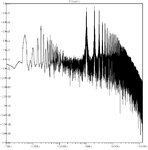
FFT of the modulated signal
I have the arrl handbook and they present alot of schematics with transformers, can someone explain me the purpose of that transformers? Are that a matching network?
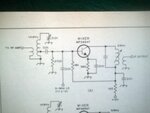
Bipolar transistor mixer
Thanks
I am designing and building a simple radio transmitter just to practise my electronic skills and learn a little bit more. I started by designing a clapp oscillator, which produce a sine wave with a fundamental at 1 MHz (the goal), and many harmonics at 2 MHz etc. My first question is if I should add a band filter to try to reduce the harmonics?

Clapp oscillator

FFT of the signal generated by the oscillator
Next I added a mixer to modulate the signal and the carrier. I present a graph with the waves of the signal, oscillator and the modulated signal. My questions are: How can I isolate the oscillator signal so it doesn't get modulated? Should I add a matching network between the oscillator and the mixer? Is the modulated signal acceptable or is it too weak?

AM modulator

Bench where I test everything

Oscillator (red), signal (blue) and modulated signal (green)

FFT of the modulated signal
I have the arrl handbook and they present alot of schematics with transformers, can someone explain me the purpose of that transformers? Are that a matching network?

Bipolar transistor mixer
Thanks
